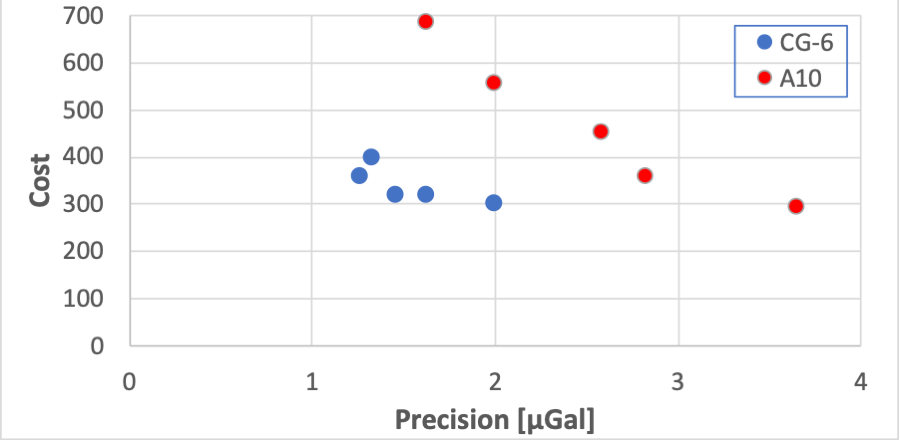Support & acquisition QC
We give consultancy and third-party advices during program and project planning, data acquisition and interpretation.

A simple model for noise reduction by redundancy converted into cost of equipment + cost of surveying, cross-plotted against estimated accuracy. From Eiken and Zumberge (2019).
